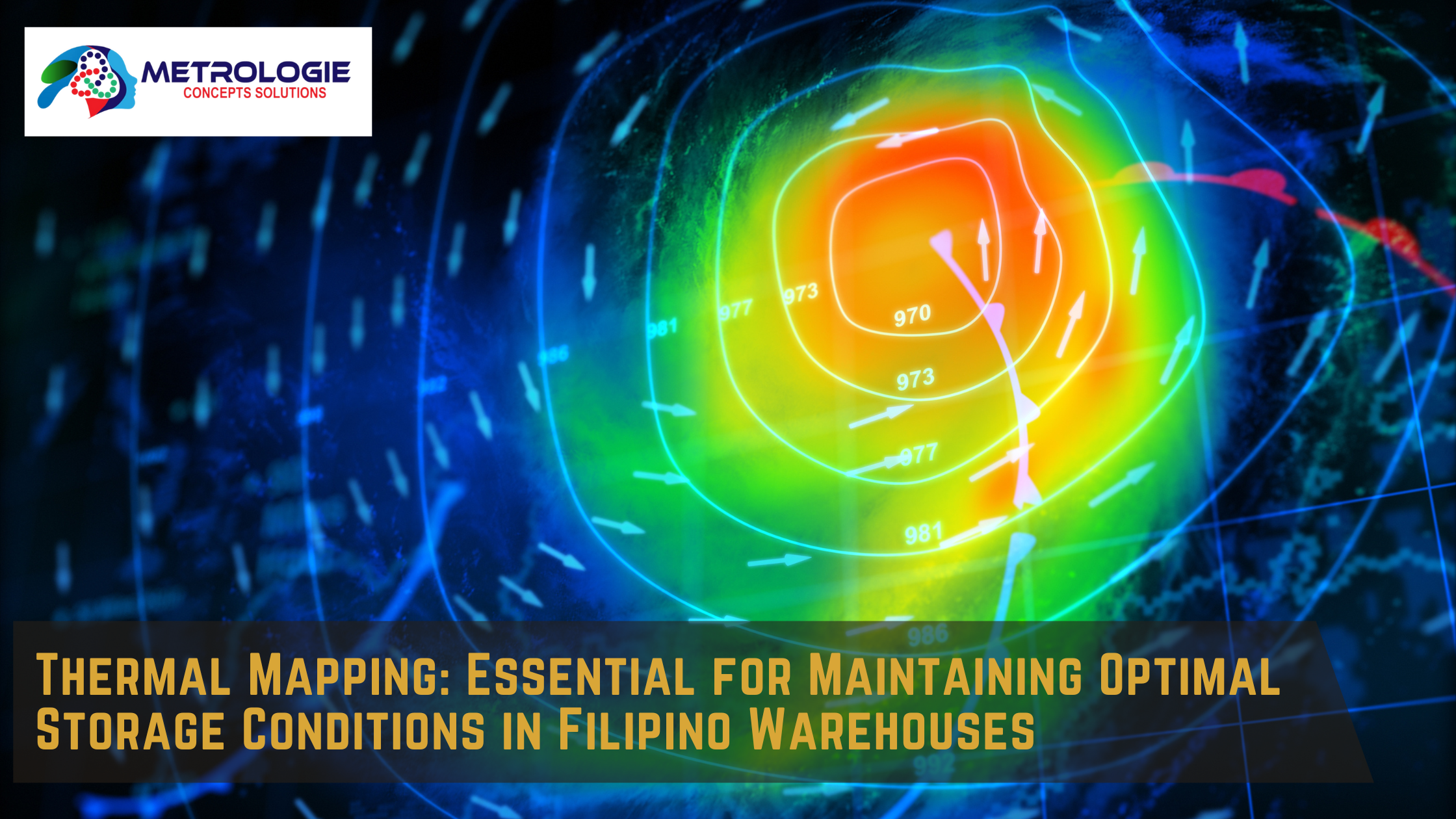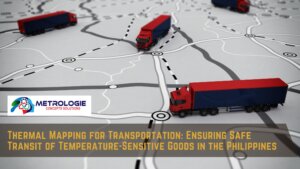Introduction
In the world of warehousing, maintaining optimal storage conditions is critical. Whether it’s pharmaceuticals, food, or other temperature-sensitive goods, the right environment ensures product quality and safety. This is where thermal mapping comes into play. In this article, we will delve into the significance of thermal mapping, especially in the context of Filipino warehouses, and why it’s essential for maintaining optimal storage conditions.
What is Thermal Mapping?
Definition and Purpose
Thermal mapping, also known as temperature mapping, involves monitoring and recording the temperature distribution within a storage area over a specific period. Its primary purpose is to identify hot and cold spots, ensuring that all areas within the warehouse maintain the required temperature range.
Key Components of Thermal Mapping
Thermal mapping involves the use of data loggers, sensors, and specialized software. These tools work together to collect, analyze, and visualize temperature data, providing a comprehensive understanding of the storage environment.
Why Thermal Mapping is Crucial for Warehouses
Impact on Product Quality
Temperature-sensitive products, such as pharmaceuticals and food items, can degrade quickly if stored improperly. Thermal mapping helps prevent this by ensuring that the entire storage area remains within the specified temperature range, thus preserving product integrity.
Regulatory Compliance
Many industries have strict regulations regarding storage conditions. Thermal mapping ensures compliance with these regulations, avoiding potential legal issues and ensuring that products meet safety standards.
How Thermal Mapping Works
The Process of Thermal Mapping
Thermal mapping typically involves the following steps:
- Preliminary Assessment: Understanding the storage requirements and identifying critical areas.
- Data Collection: Placing data loggers and sensors throughout the storage area to monitor temperature over a defined period.
- Analysis: Collecting and analyzing the data to identify temperature variations.
- Reporting: Creating detailed reports and recommendations based on the findings.
Tools and Technology Used
Advanced data loggers and sensors are crucial for accurate thermal mapping. These devices continuously record temperature data, which is then analyzed using specialized software to create thermal maps.
Benefits of Thermal Mapping
Ensuring Optimal Storage Conditions
Thermal mapping helps maintain the ideal storage environment, reducing the risk of product spoilage and ensuring that goods remain in top condition.
Preventing Product Spoilage
By identifying hot and cold spots, thermal mapping allows warehouse managers to take corrective actions, such as adjusting air conditioning or repositioning products, to prevent spoilage.
Thermal Mapping in the Filipino Context
Unique Challenges in the Philippines
The Philippines’ tropical climate presents unique challenges for warehouse storage. High humidity and temperature fluctuations can impact product quality, making thermal mapping even more crucial.
Case Studies of Successful Implementation
Several Filipino warehouses have successfully implemented thermal mapping. For instance, a major pharmaceutical company reported a significant reduction in product spoilage and enhanced regulatory compliance after adopting thermal mapping.
Steps to Implement Thermal Mapping in Warehouses
Preliminary Assessment
Start by assessing the warehouse layout and identifying areas prone to temperature variations. Understand the specific storage requirements of the products.
Data Collection
Install data loggers and sensors throughout the warehouse. Monitor temperatures continuously over a set period, typically ranging from a few days to several weeks.
Analysis and Reporting
Analyze the collected data to identify patterns and variations. Generate detailed reports highlighting areas that need attention and recommending corrective actions.
Common Challenges and Solutions
Technical Difficulties
Implementing thermal mapping can pose technical challenges, such as device malfunctions or data inaccuracies. Regular maintenance and calibration of equipment can mitigate these issues.
Cost Considerations
While thermal mapping requires an initial investment, the long-term benefits, such as reduced product spoilage and regulatory compliance, outweigh the costs.
Choosing the Right Thermal Mapping Service
Key Factors to Consider
When selecting a thermal mapping service, consider factors such as the provider’s experience, technology used, and customer support. It’s essential to choose a reputable provider to ensure accurate and reliable results.
Top Providers in the Philippines
Several companies offer thermal mapping services in the Philippines. Some of the top providers include XYZ Thermal Solutions and ABC Mapping Services, known for their expertise and advanced technology.
Integrating Thermal Mapping with Other Warehouse Management Systems
How Thermal Mapping Complements WMS
Thermal mapping can be integrated with existing warehouse management systems (WMS) to provide a holistic view of storage conditions. This integration allows for real-time monitoring and automated alerts, enhancing overall efficiency.
Case Examples
A leading logistics company integrated thermal mapping with their WMS, resulting in improved temperature control and faster response to potential issues, ultimately leading to better product preservation.
Best Practices for Maintaining Optimal Storage Conditions
Regular Monitoring
Regularly monitor storage conditions using thermal mapping to identify and address temperature fluctuations promptly. Continuous monitoring helps maintain a stable environment.
Staff Training
Ensure that warehouse staff are trained in thermal mapping techniques and understand the importance of maintaining optimal storage conditions. Regular training sessions can enhance their skills and knowledge.
Regulatory Standards for Warehouse Storage in the Philippines
Overview of Local Regulations
The Philippines has stringent regulations regarding warehouse storage conditions, particularly for pharmaceuticals and food products. Compliance with these regulations is mandatory to ensure product safety.
How Thermal Mapping Helps in Compliance
Thermal mapping provides documented evidence of temperature control, aiding in regulatory compliance. Detailed reports generated through thermal mapping can be presented during inspections to demonstrate adherence to standards.
Future Trends in Thermal Mapping Technology
Innovations on the Horizon
The field of thermal mapping is continuously evolving, with new technologies and innovations emerging. Advances such as wireless sensors, IoT integration, and AI-driven analytics are set to revolutionize thermal mapping.
Potential Impact on the Industry
These innovations will enhance the accuracy and efficiency of thermal mapping, making it more accessible and cost-effective for warehouses. The adoption of advanced technologies will lead to better storage conditions and reduced product spoilage.
Conclusion
In conclusion, thermal mapping is essential for maintaining optimal storage conditions in Filipino warehouses. It ensures product quality, aids in regulatory compliance, and prevents spoilage. By implementing thermal mapping, warehouses can achieve better control over their storage environment, ultimately leading to improved efficiency and customer satisfaction.
FAQs about Thermal Mapping in Warehouses
What is the cost of thermal mapping?
The cost of thermal mapping varies depending on the warehouse size and the technology used. However, the investment is justified by the benefits of reduced product spoilage and enhanced regulatory compliance.
How often should thermal mapping be conducted?
Thermal mapping should be conducted regularly, with the frequency depending on the type of products stored and the warehouse conditions. Typically, it is recommended to perform thermal mapping at least once a year.
Can thermal mapping be done in-house?
Yes, thermal mapping can be done in-house if the warehouse has the necessary equipment and trained personnel. However, many companies prefer to outsource this task to specialized service providers for accuracy and reliability.
What are the key factors to consider when choosing a thermal mapping service?
When choosing a thermal mapping service, consider factors such as the provider’s experience, technology used, customer support, and cost. Selecting a reputable provider ensures accurate and reliable results.
How does thermal mapping help in regulatory compliance?
Thermal mapping provides documented evidence of temperature control, which is essential for regulatory compliance. Detailed reports generated through thermal mapping can be presented during inspections to demonstrate adherence to storage standards.




